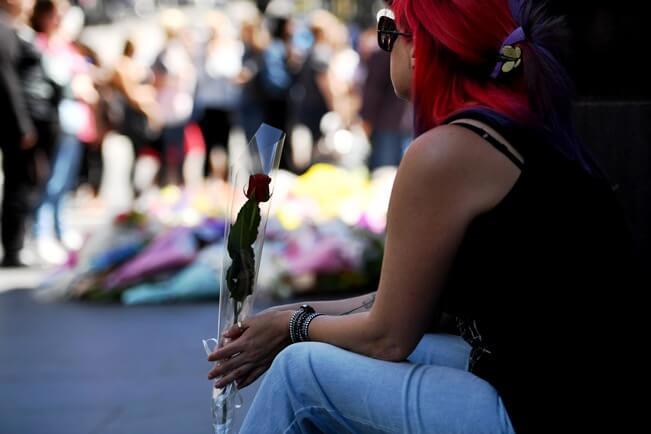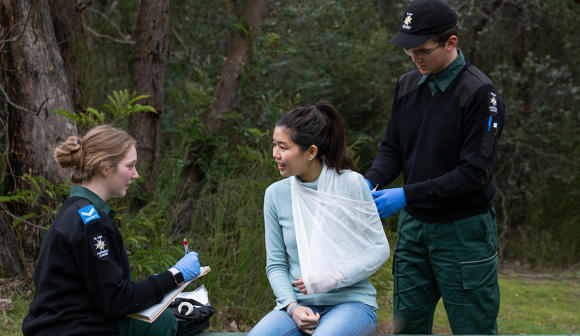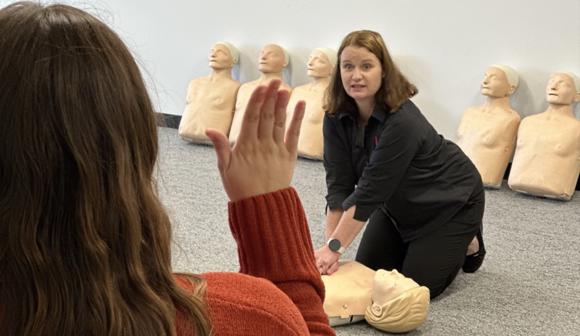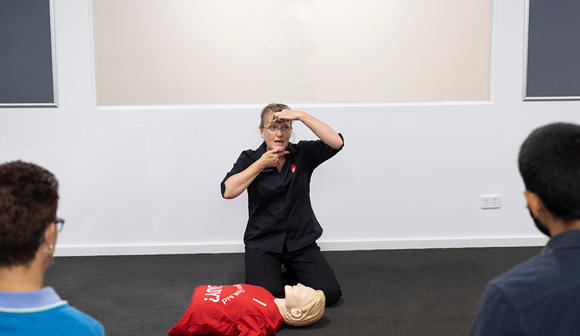This Is What I’d Trained For – My Bourke Street Story

By Sharon Carpenter, St John Ambulance Victoria Volunteer
One of our dedicated St John volunteers was at the scene of the Bourke St tragedy, where she fearlessly helped one critically injured casualty and three others. Sharon has kindly allowed us to republish her account of events, abridged here from the full version at her website.
“This is what I’d trained for.
Arguably, what happened on Friday 20th January 2017 was the worst mass casualty disaster to be mercilessly thrown at The City of Melbourne since the Queen Street massacre in December of 1987. I was 10 years old when that happened and I wasn’t exactly the current affair-aware child. Different street. Different weapon. Different date. Different century. Same result.
But this is what I’d trained for.
As I surveyed the scene from Level 8 of a building on the north side of Bourke Street, I was half listening to the words of my colleague who’d returned with his lunch only a few moments before. All of us were pressed against the windows looking east and west down Bourke Street. We collectively turned our eyes to the sky whenever the trips and spikes in sound frequency came, caused by the rotating blades of a police helicopter.
My eyes were fixated on the person lying in front of a store on the south side of the street directly opposite. A motorcycle was on its side next to the person’s body. I surveyed and I listened.
I’m not a paramedic. I have a first aid certificate and a bunch of upgrades that make me a First Responder. While I’m certified to offer more than your average first aider, my scope of practice is still narrower than a newly-minted paramedic. But also what I have is 12 years of experience, above average shift numbers and countless stories that I could write books about and never be finished. After 12 years, you can also say I’ve been on my fair share of shifts when things have turned from bad to worse.
I know what I can do and I know what I should never do, especially when things are like this.
Because this is what I’d trained for.
Tick, tick, tick, tick, tick, tick.
That’s my internal clock speeding its way towards the number of minutes that is your typical ambulance response time for a Cat1 trauma in the Melbourne CBD. All other things being equal, they should have been on scene within minutes. That meant all other things were not equal. A textbook symptom of a potential cataclysm that is the type of cataclysm that leads to ambulances being unable to respond as swiftly as I know they can.
This is what I’ve trained for.
My skill is in patching up people, and keeping them alive until the up-skilled arrive with the adrenaline, spine boards and beacons needed for a fast exit to an Emergency Department. Basic or advanced, our level of skill isn’t divisive at all, it’s complementary. If I help other responders by taking care of my part, then I free them up to do stuff I can’t do. An invisible chain of survival forms when we all work together like this. Each one of us are connecting links along that chain that weaves its way through all the carnage, and slowly wraps itself around everyone there. That chain can be seen if you know how to see it. It’s remarkable to watch. It’s when an uncontrolled chaotic situation, turns it into a controlled one.
This is what we train for.
I saw an article in The Age on Sunday about the Bourke Street events that made me pull out my phone. There was a name I recognised. One of the many city workers and members of the public who helped on the ground as a bystander. The article placed him in the same area I was in, but at another patient.
They’re not trained for this.
He is feeling a bit embarrassed about the attention because “there were plenty of people who were MUCH more useful than me.”
I was doing what I was trained for.
In a mass casualty event, not a single alphabet emergency response service could do everything that was done without the contribution of the others. But there are still limits. I can’t maintain an open airway, control major bleeds, monitor vitals, put defibrillator pads on, splint a broken leg, all while helping an off-duty doctor on her honeymoon keep a critical patient’s head still until a C-collar came along. Critical trauma cases require all this, and more. All of it happening concurrently is essential for a person’s chance of survival.
When I asked for a bandage, I was given 4.
When I asked for shears, they were put in my hand.
When I asked for clean water, 3 bottles turn up with the cap already off ready to roll.
I asked for a lot of things from a lot of bystanders surrounding the patients I provided care for on Friday until there was nobody left who needed first aid. Every time, the response was swift. It put a smile on my face in spite of everything. I have experienced that consistently for 12 years too.
This is the Melbourne I know.
This is my Melbourne.
They weren’t trained to be a link. They just were.”
Thank you Sharon from everyone at St John for putting your training and experience to action in helping so many people and your eloquent rendition above that has given us an inkling of what it was like to be in that moment.
We are forever grateful to you and all the other first responders for stepping up and truly representing the St John motto of ‘saving lives through first aid’.

Volunteer with St John
Join our team of dedicated volunteers who provide first aid services at events

HLTAID011 PROVIDE FIRST AID
Suitable for both people in workplaces and members of the public who would like a comprehensive first aid course.

HLTAID009 PROVIDE CARDIOPULMONARY RESUSCITATION
Learn the skills to perform life-saving (CPR) on an adult, child or infant who is unconscious and not breathing normally.
